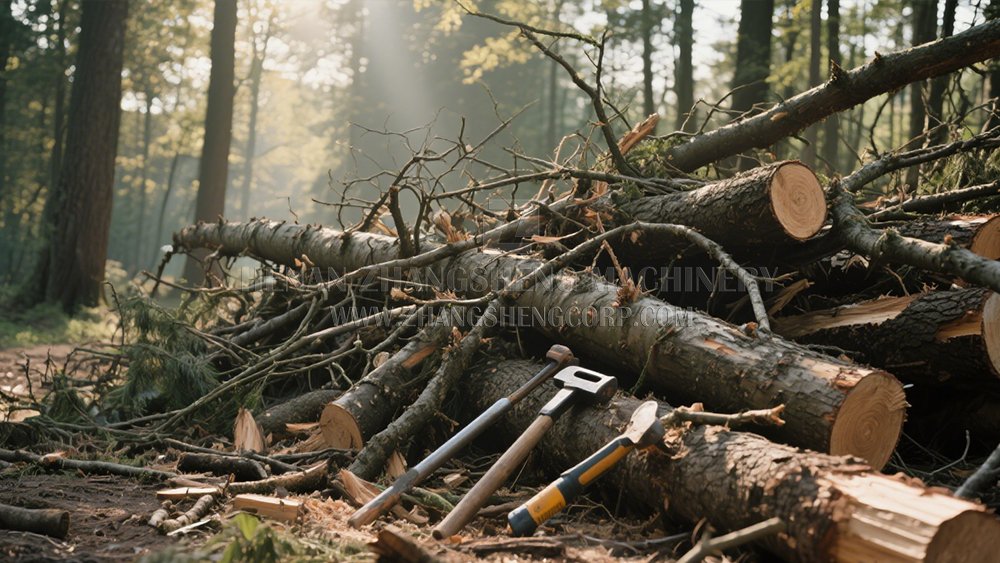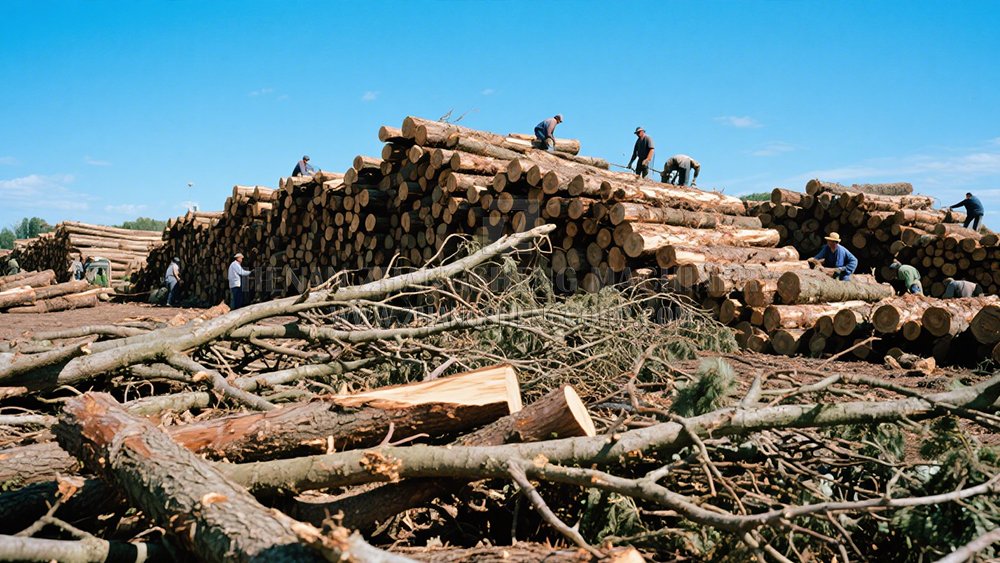Dealing with wet branches can be a challenge for industrial wood chipper operators. Mismanagement may lead to clogs, inefficiencies, or even equipment damage. So, what’s the solution?
Yes, you can put wet branches in an industrial wood chipper, but it requires adherence to best practices to prevent clogs and ensure efficient operation. Proper preparation and maintenance are key.
Understanding the challenges of chipping wet branches and using the right techniques can save you time, effort, and money. Let’s explore how to handle this task effectively.
What Challenges Do Wet Branches Pose in Wood Chipping?
Wet branches can complicate wood chipping due to their moisture content and additional weight. These factors increase the risk of clogs and wear on your equipment.
Moisture in wet branches can cause leaves and fibrous material to stick, leading to blockages in the wood chipper’s mechanisms. The added weight also strains the motor and feeding system.
Chipping wet branches can also result in uneven wood chips, reducing the quality of the output. To address these challenges, preparation and proper equipment operation become essential.

How Can You Prepare Wet Branches for Chipping?
Preparation is crucial when dealing with wet branches. Without proper techniques, you risk damaging the chipper or creating poor-quality chips.
To prepare wet branches, consider pre-drying them in a sunny, well-ventilated area. This reduces moisture content and minimizes the risk of clogs during operation.
For large-scale operations, investing in drying equipment or staging areas for wet materials may be worthwhile. In addition, trimming excess leaves and small twigs can further decrease blockages and improve efficiency.
What Are the Best Practices for Chipping Wet Branches?
Using the right techniques when chipping wet branches ensures smoother operations and prolongs the lifespan of your wood chipper.
Best practices include cleaning the chipper regularly to prevent residue buildup, adjusting the settings for wet material, and feeding smaller batches to avoid overloading the machine.
Maintaining sharp blades is equally important, as dull blades struggle to cut through the added resistance of wet wood. A well-maintained blade system will cut efficiently and reduce strain on the engine.

Why Choose a High-Quality Industrial Wood Chipper?
Not all wood chippers are built to handle the demands of wet branches. High-quality industrial models offer features that make the job easier and more efficient.
Industrial wood chippers, like TIROX’s advanced models, come with anti-clogging mechanisms, hydraulic feeding systems, and robust construction designed for diverse materials, including wet branches.
These machines are built to endure heavy-duty use, minimizing downtime and maintenance costs. With proper care, they provide consistent performance even in challenging conditions.
How Does TIROX Equipment Excel in Handling Wet Branches?
For over 22 years, TIROX has been at the forefront of manufacturing innovative wood chipping solutions. Our equipment is designed to tackle real-world challenges like wet branches.
TIROX chippers feature advanced blade systems, fully hydraulic tracked designs, and 24/7 after-sales support, ensuring seamless operations for international customers in diverse environments.
Our machines are tested in 87 countries, proving their adaptability and reliability. Whether you’re working in forestry, biomass production, or waste management, TIROX chippers are engineered to meet your needs.
Conclusion
Wet branches can be chipped effectively with the right preparation, best practices, and reliable equipment. Choosing a high-quality industrial wood chipper, like those from TIROX, ensures optimal performance and efficiency.


